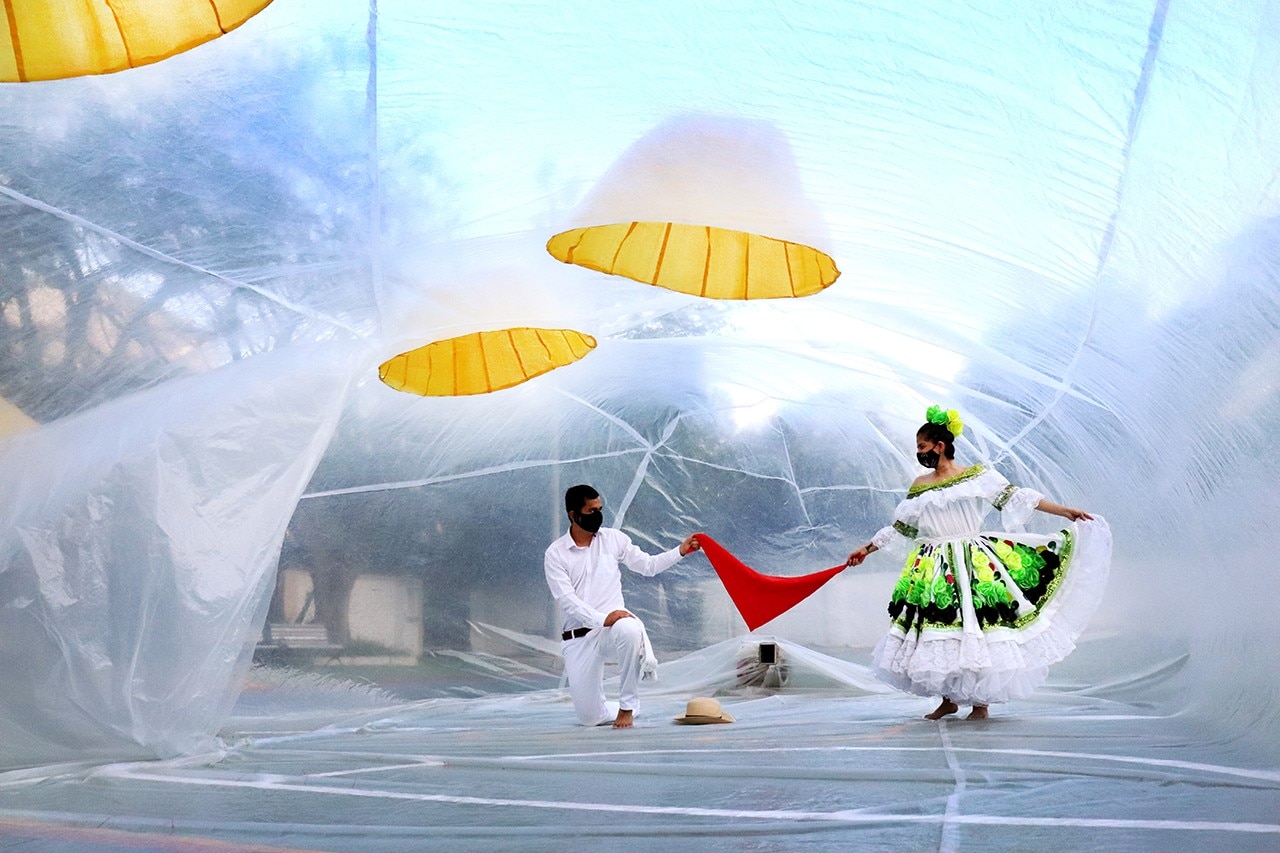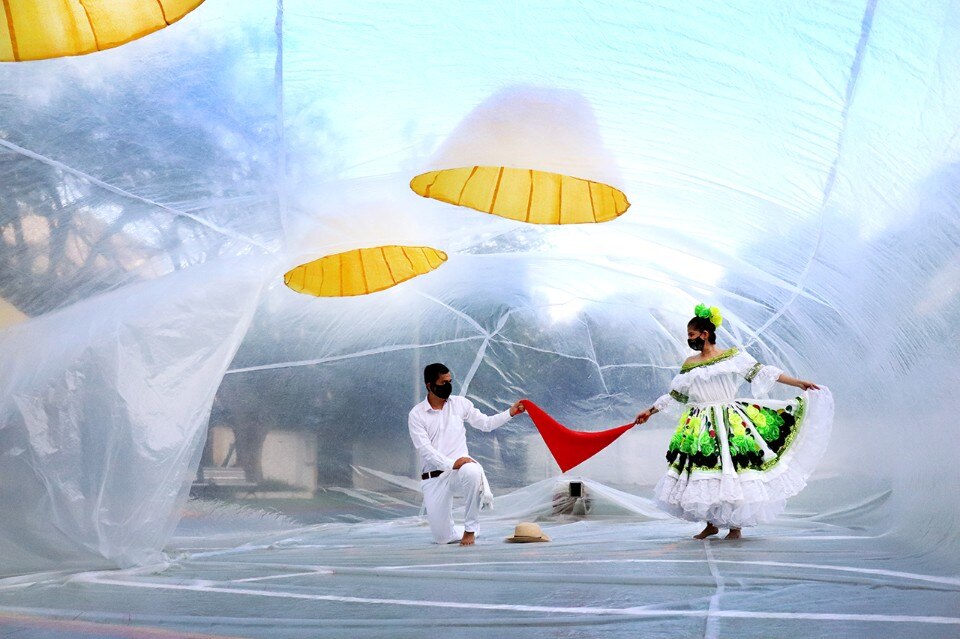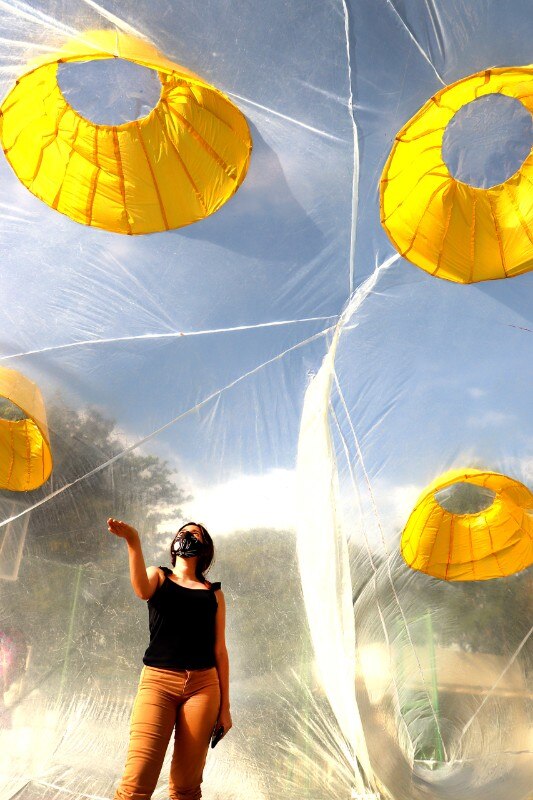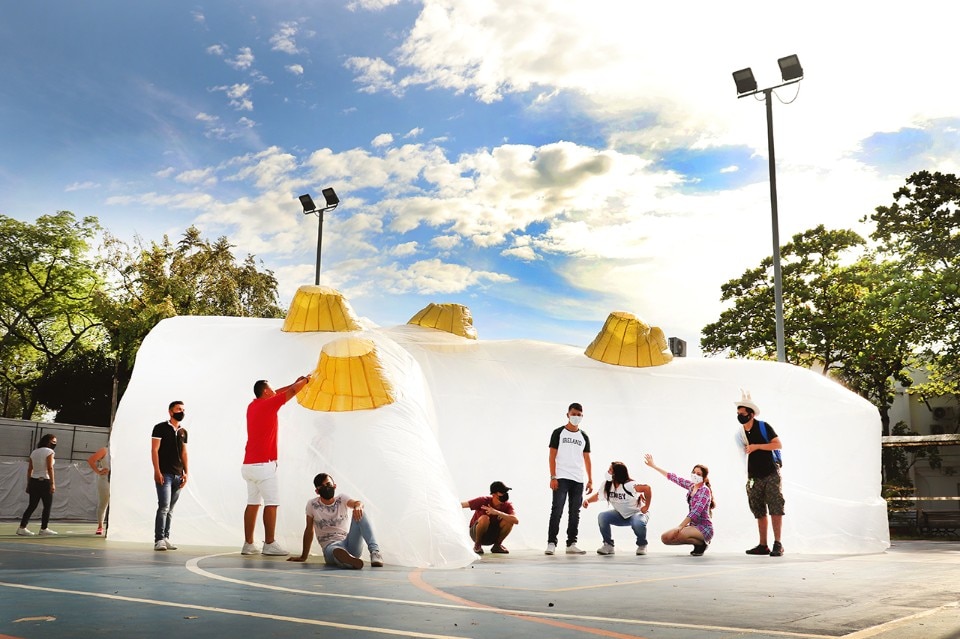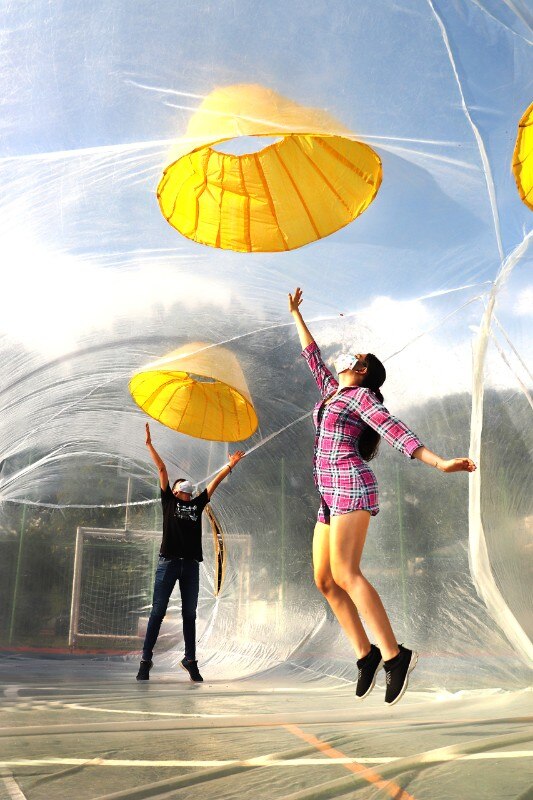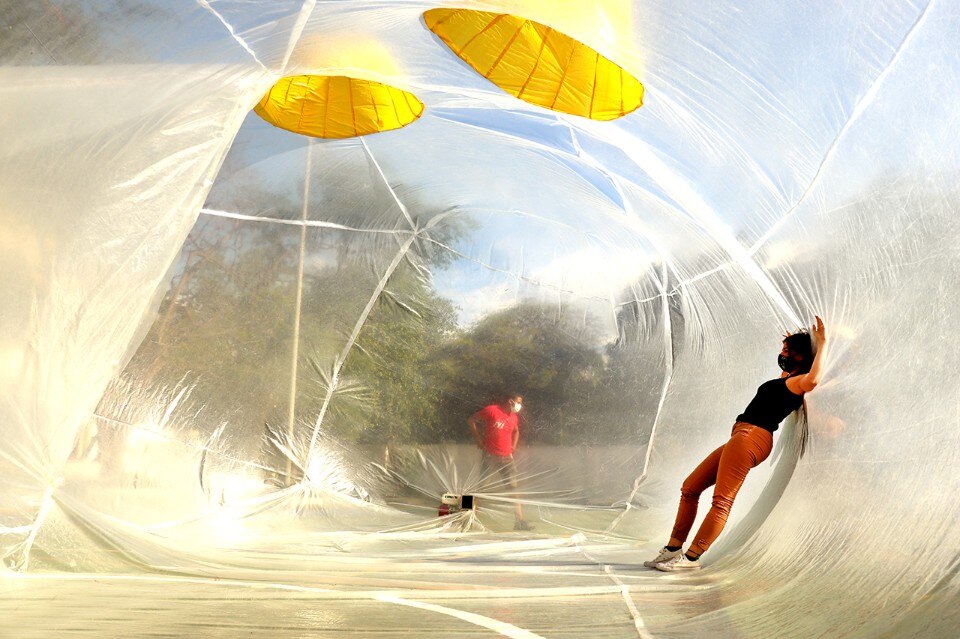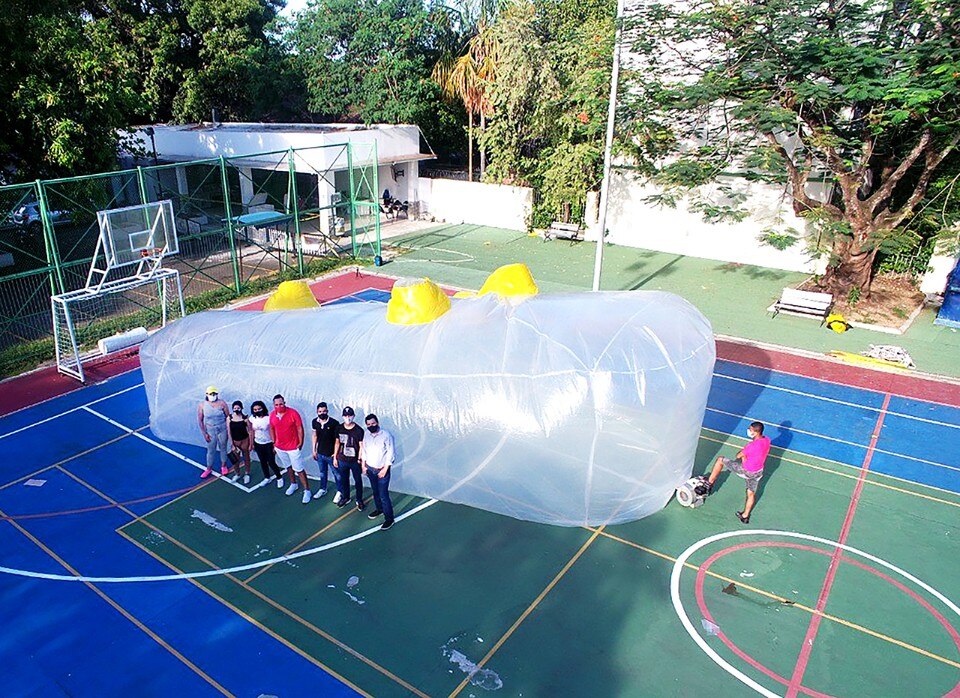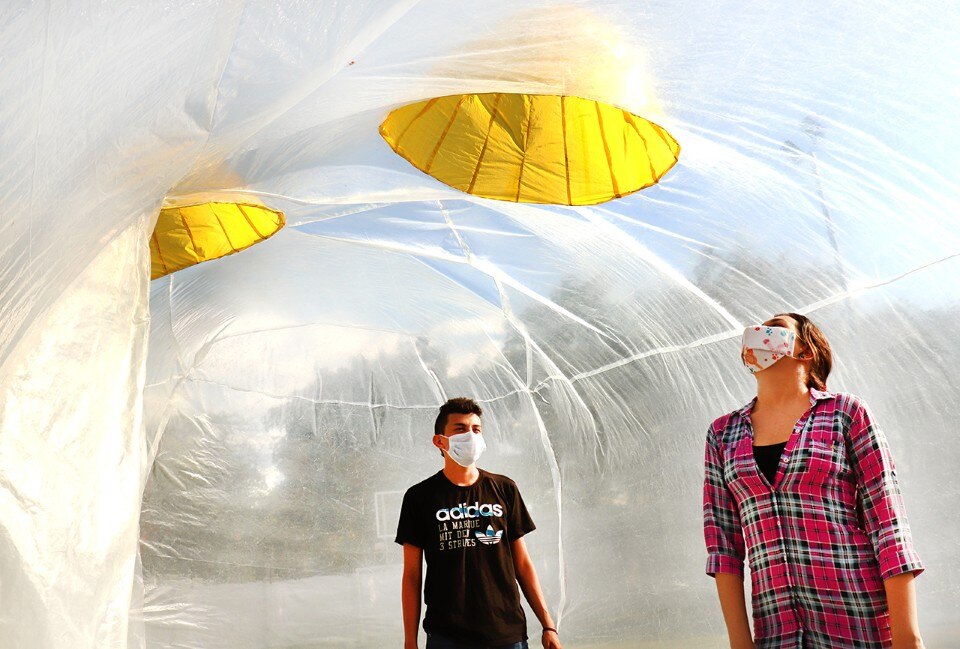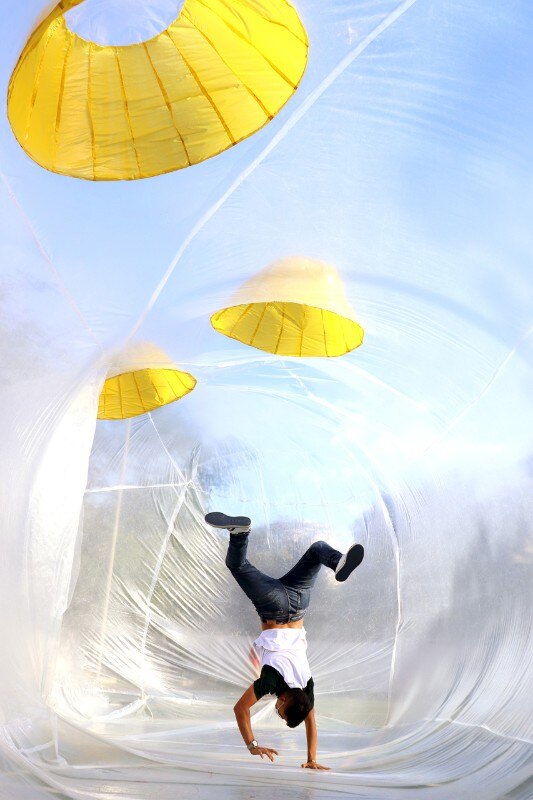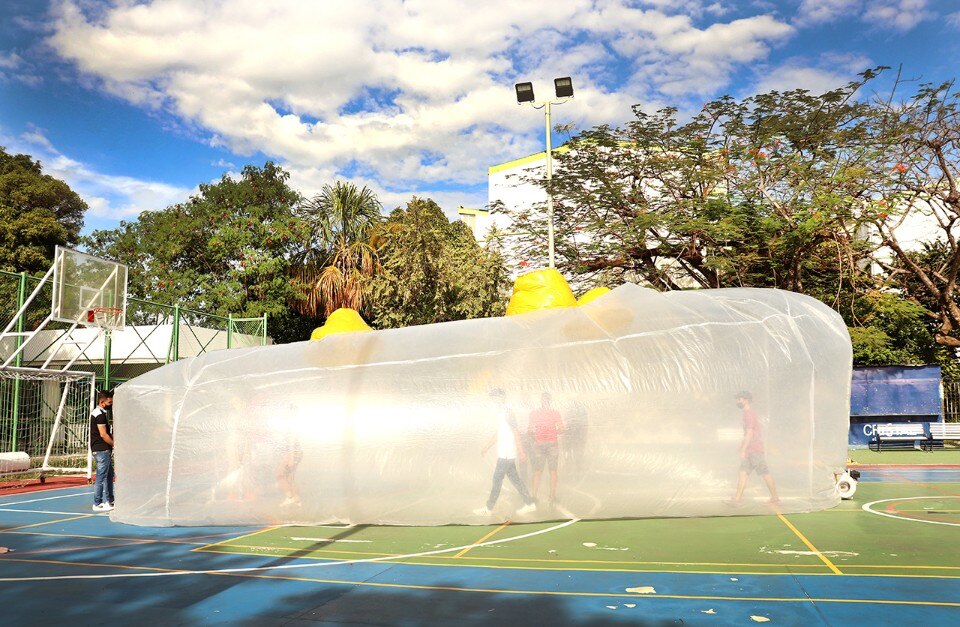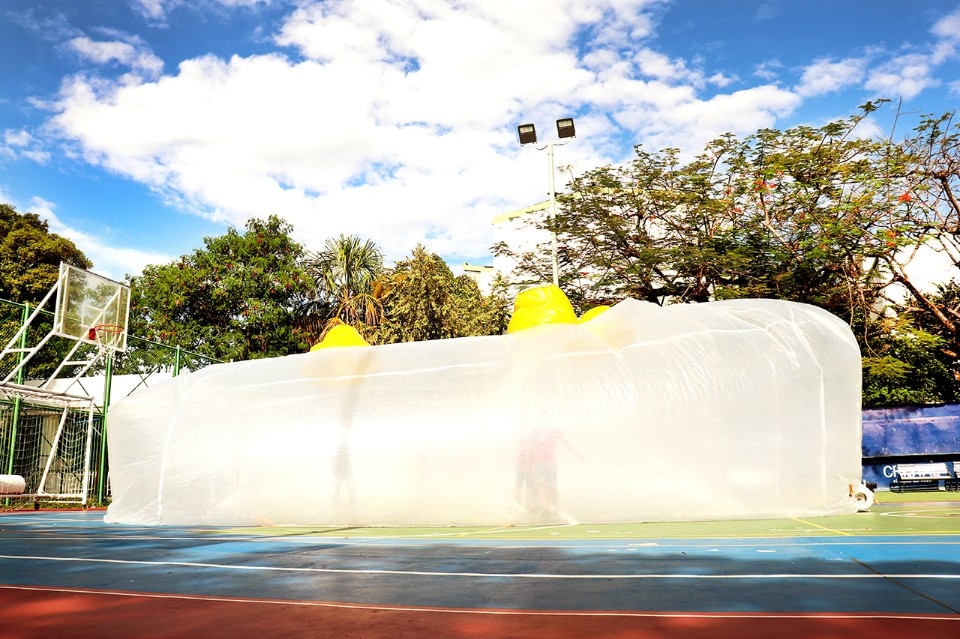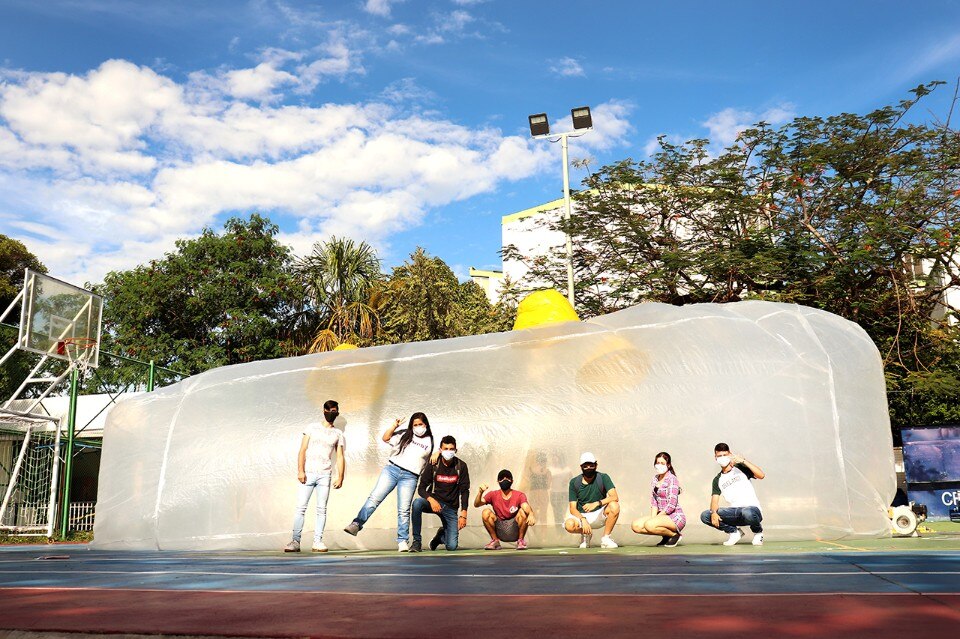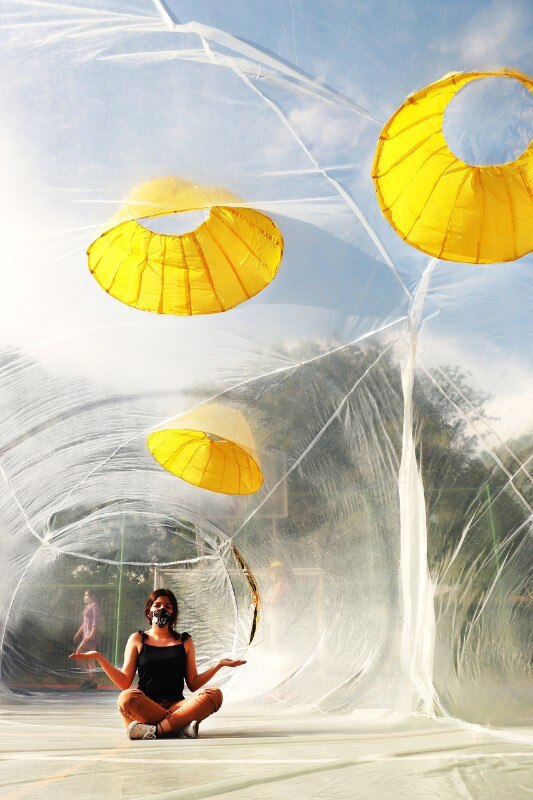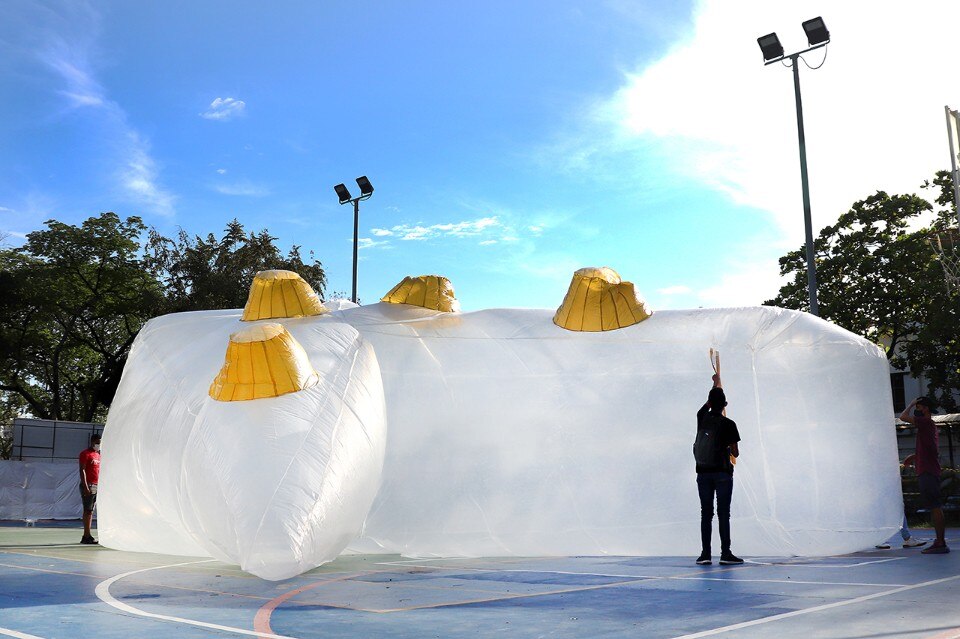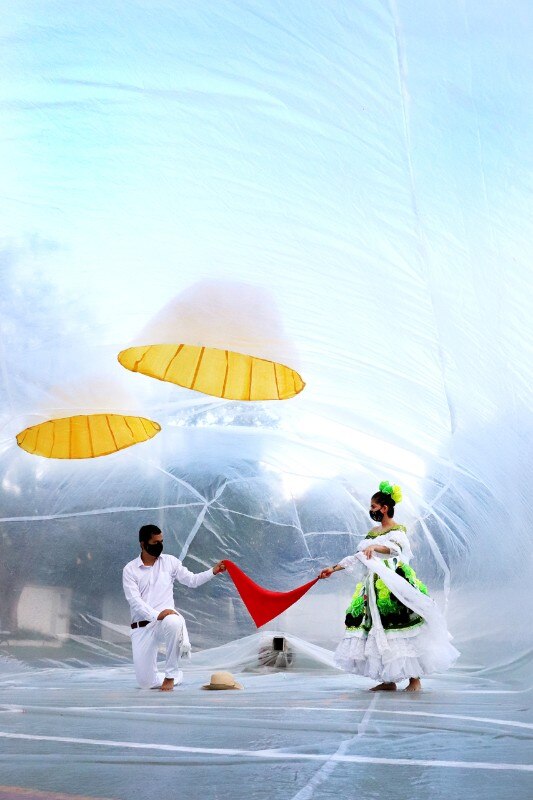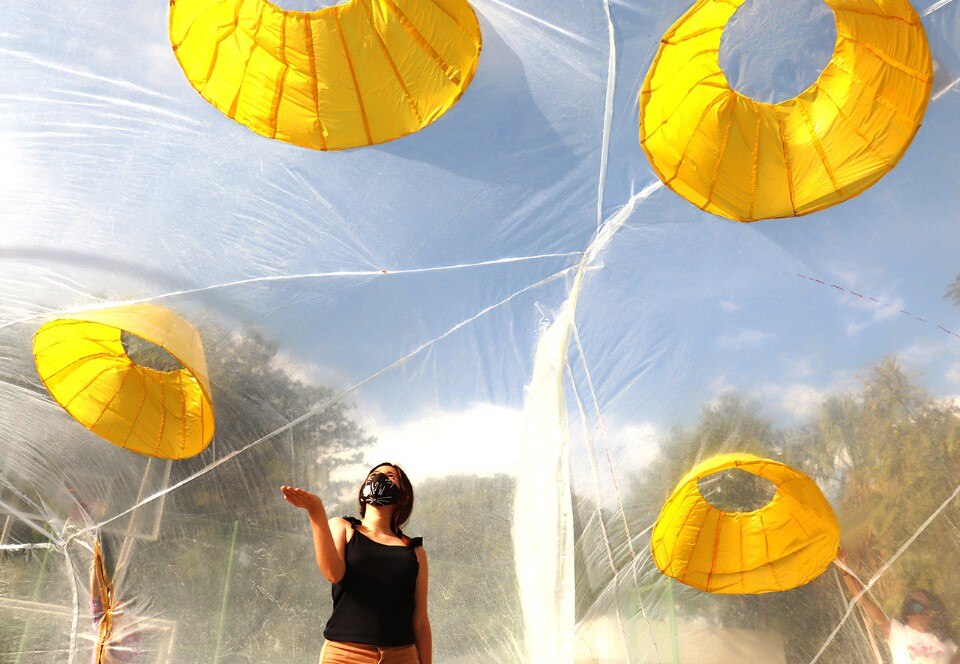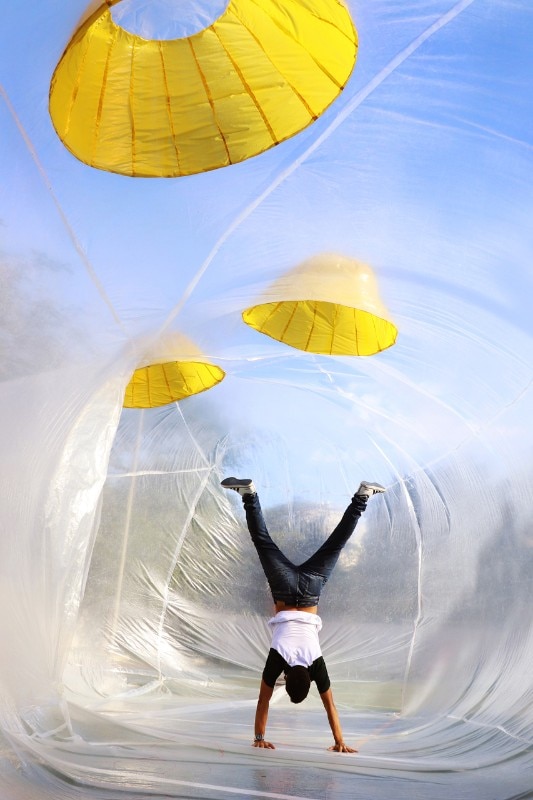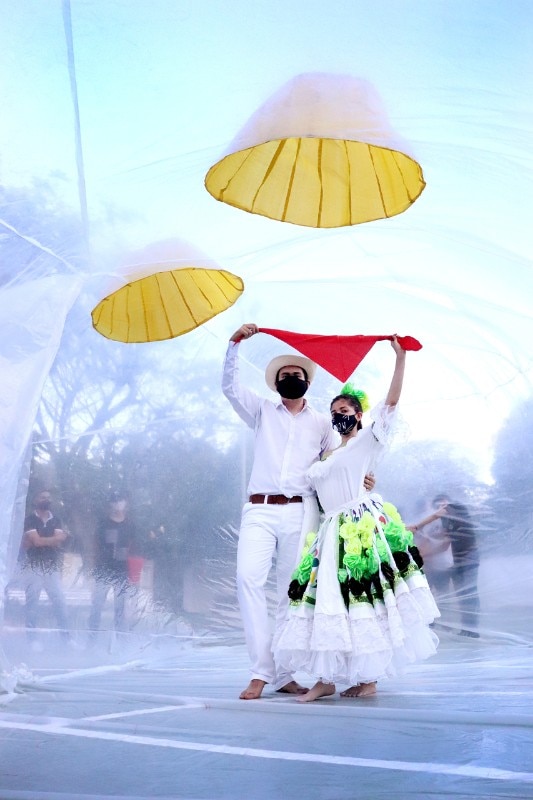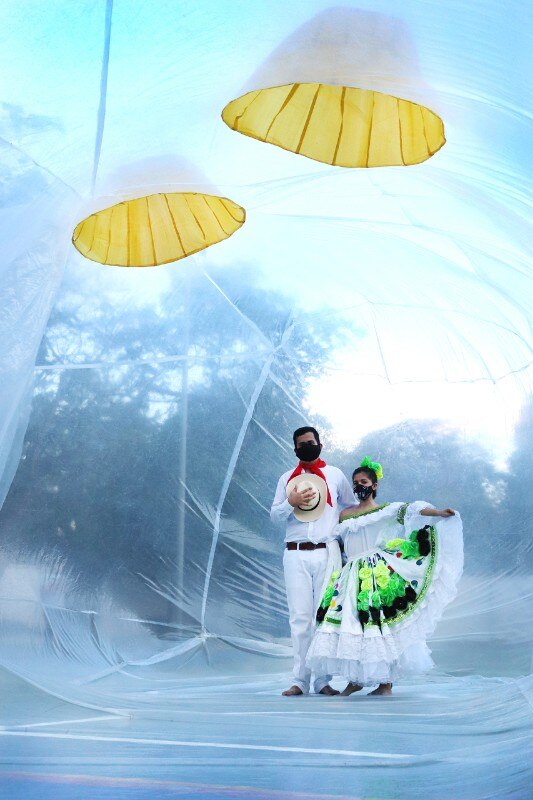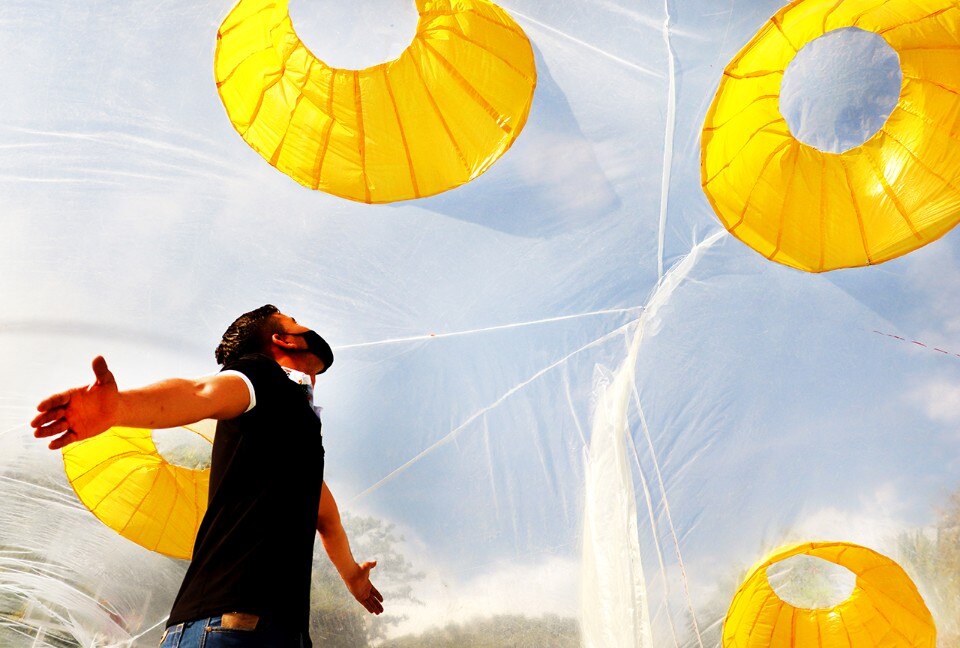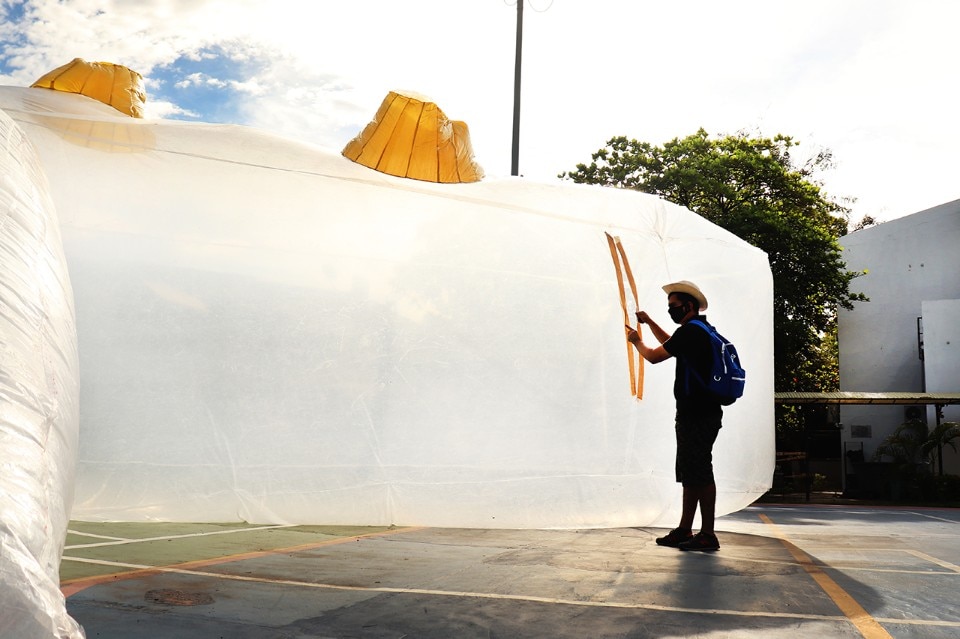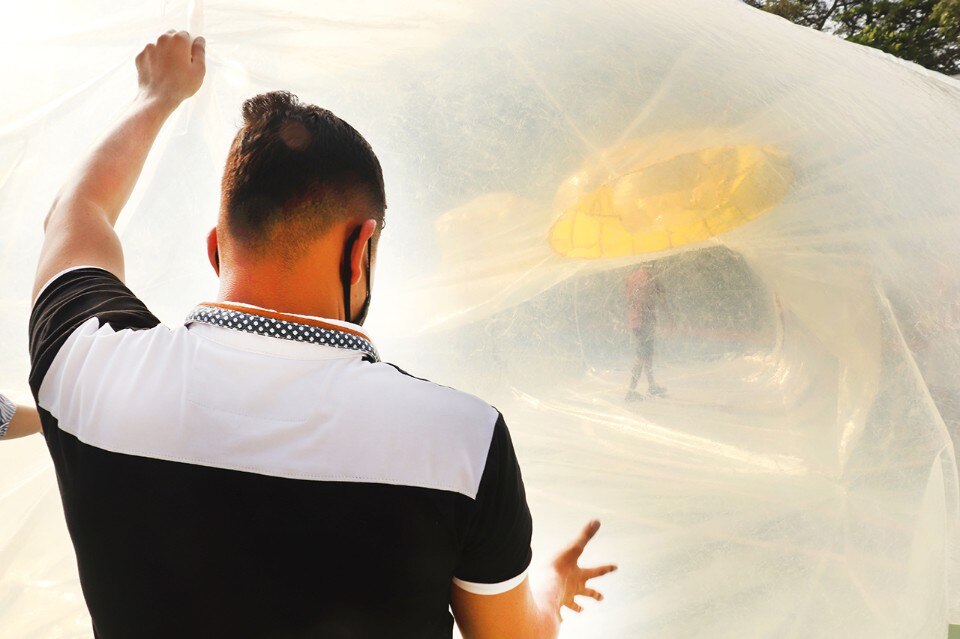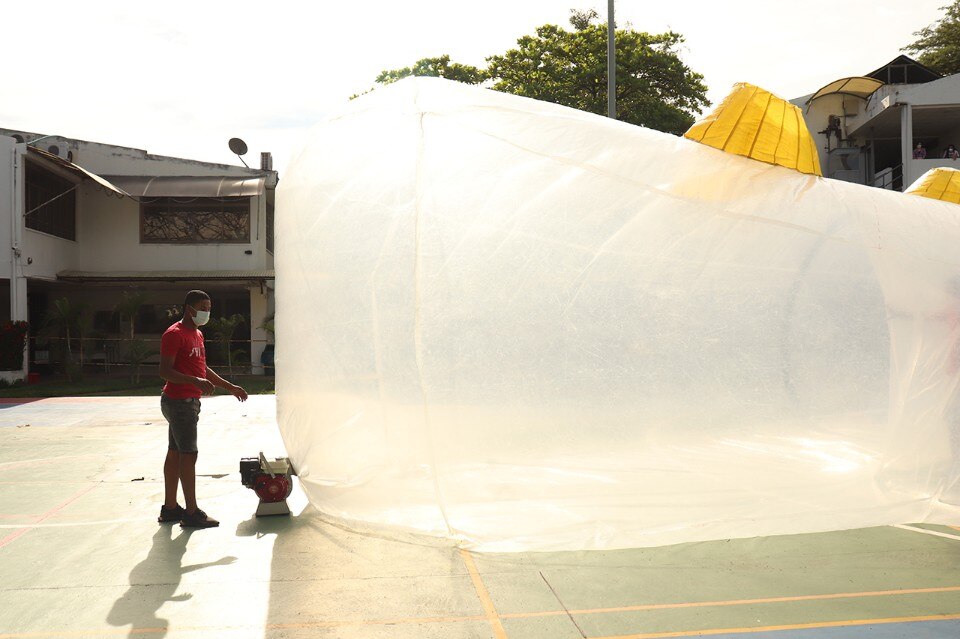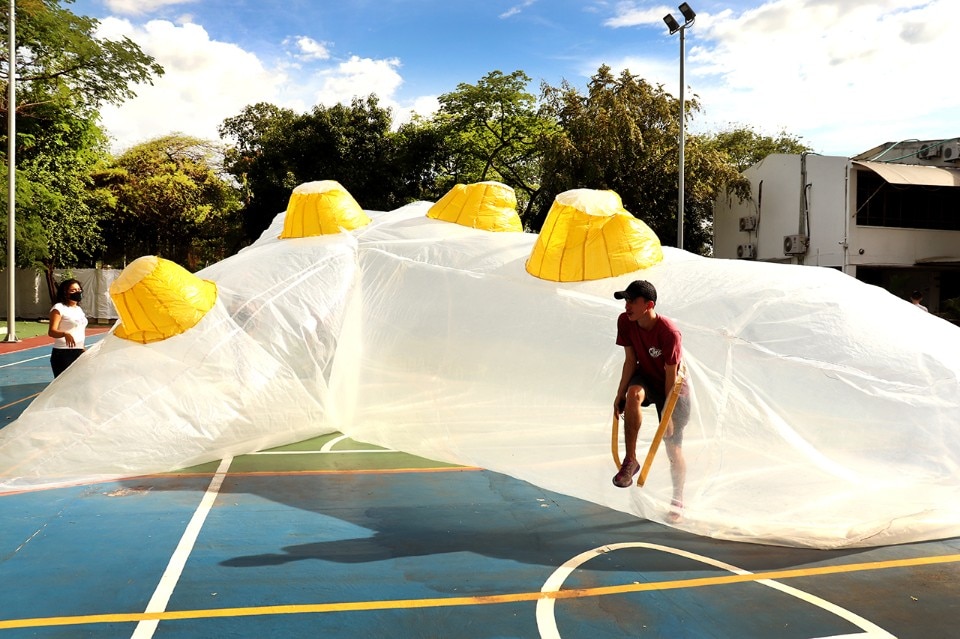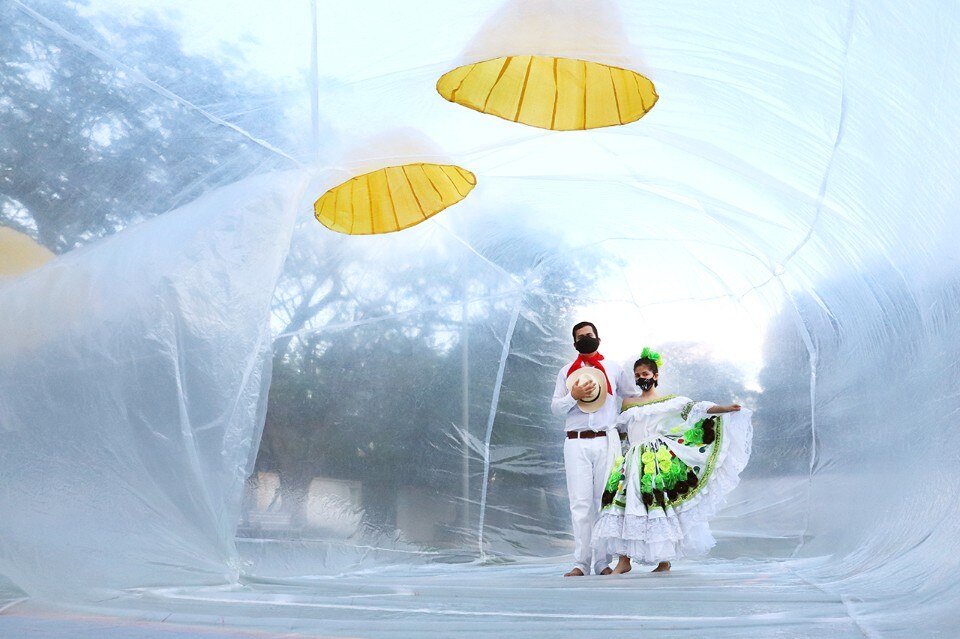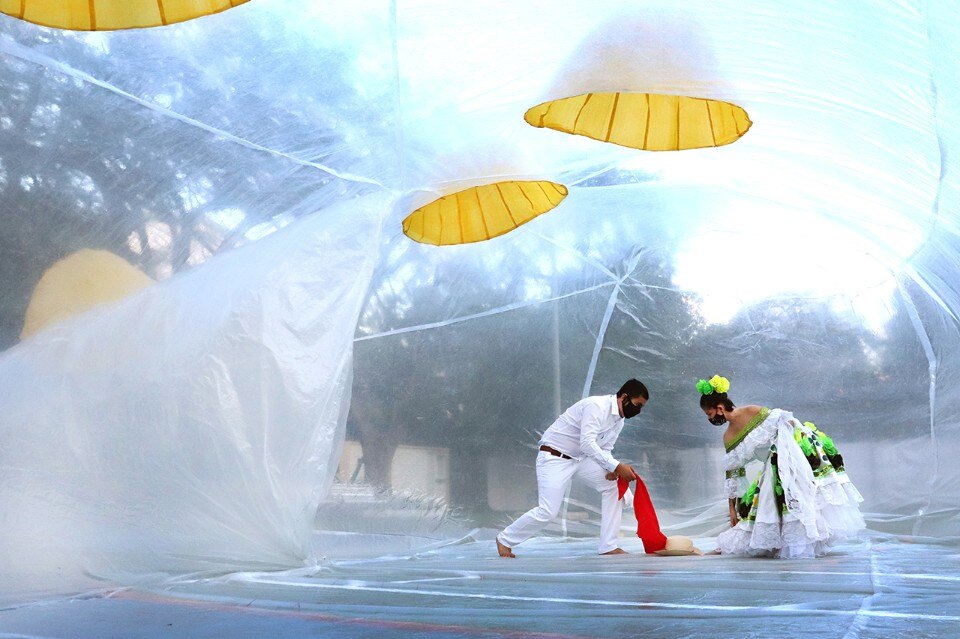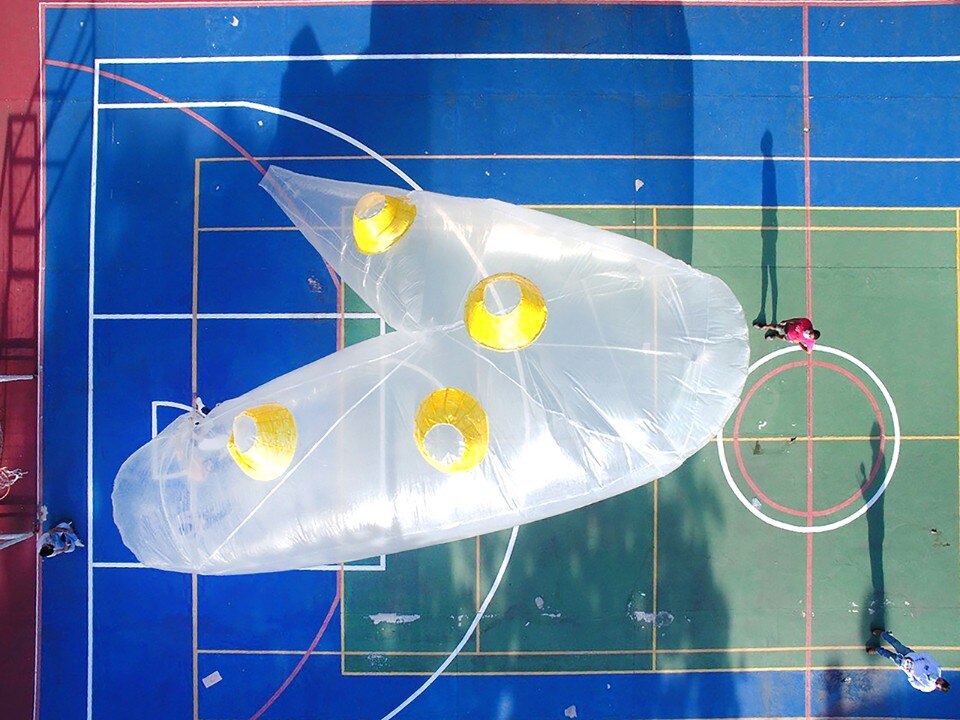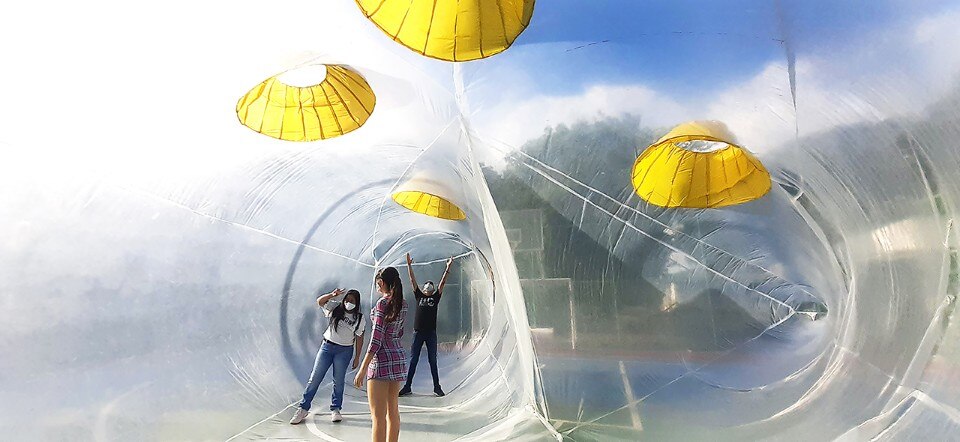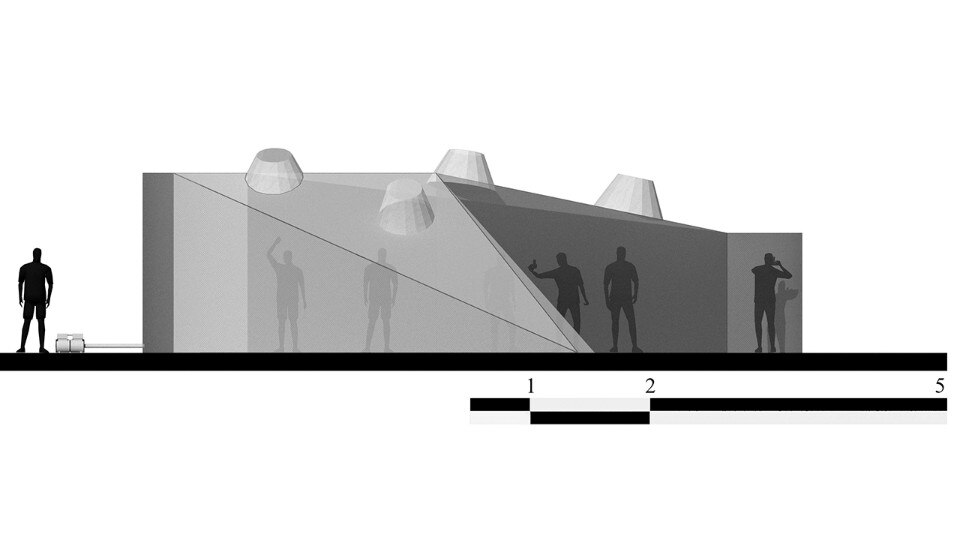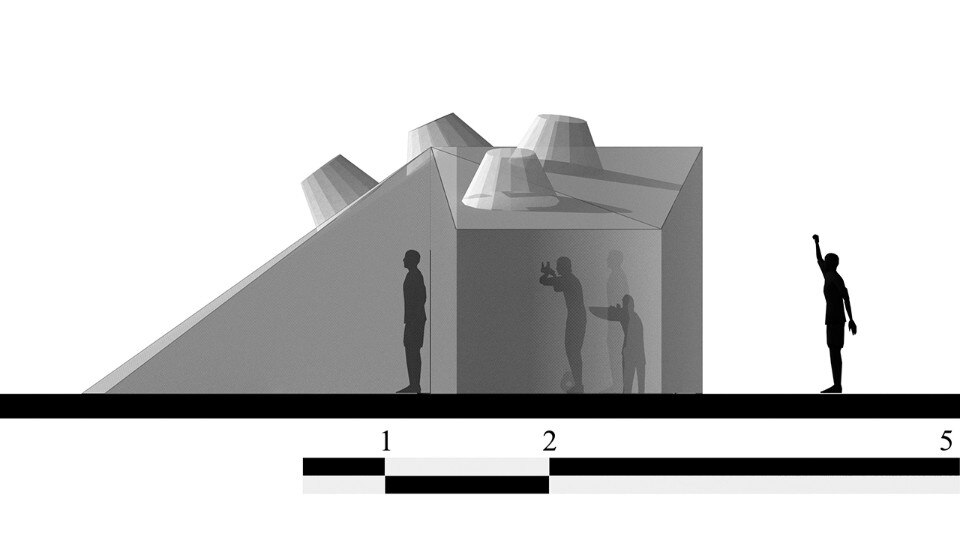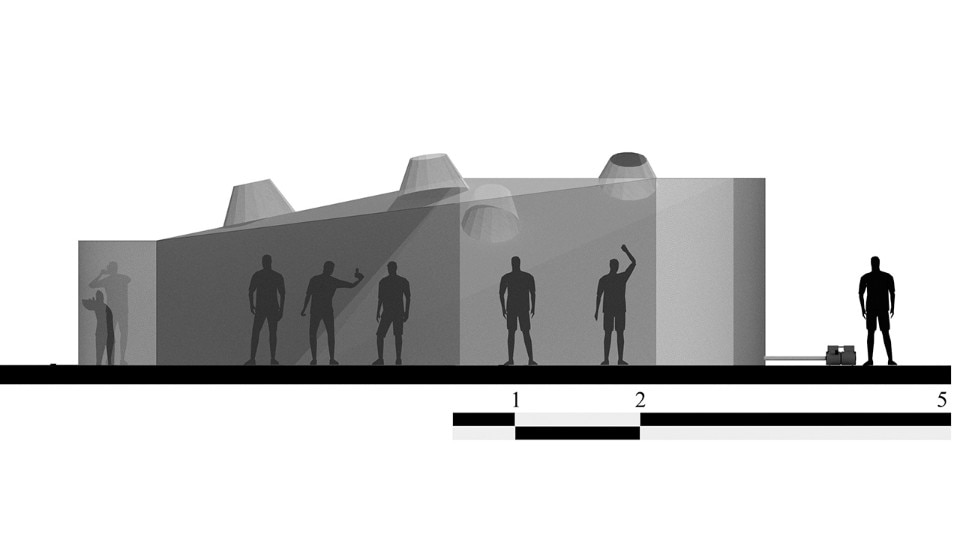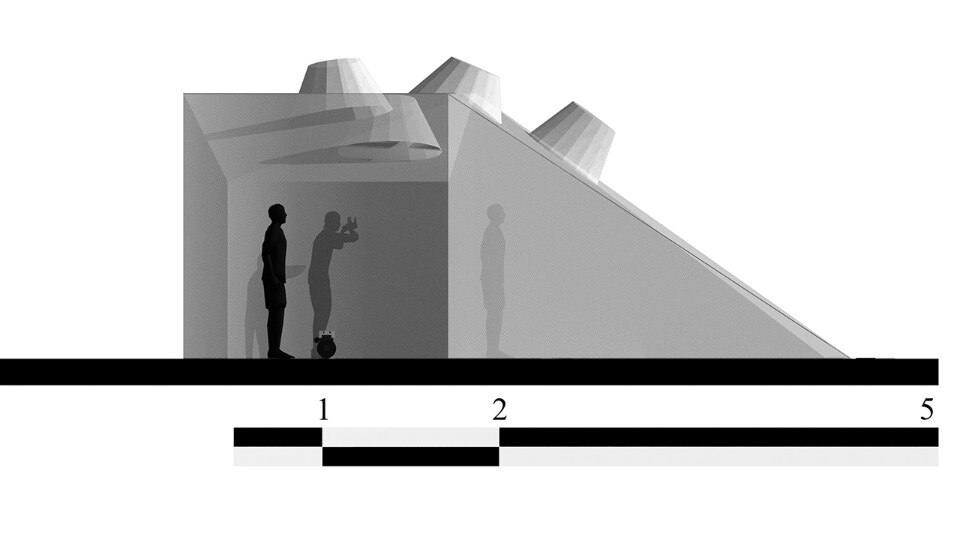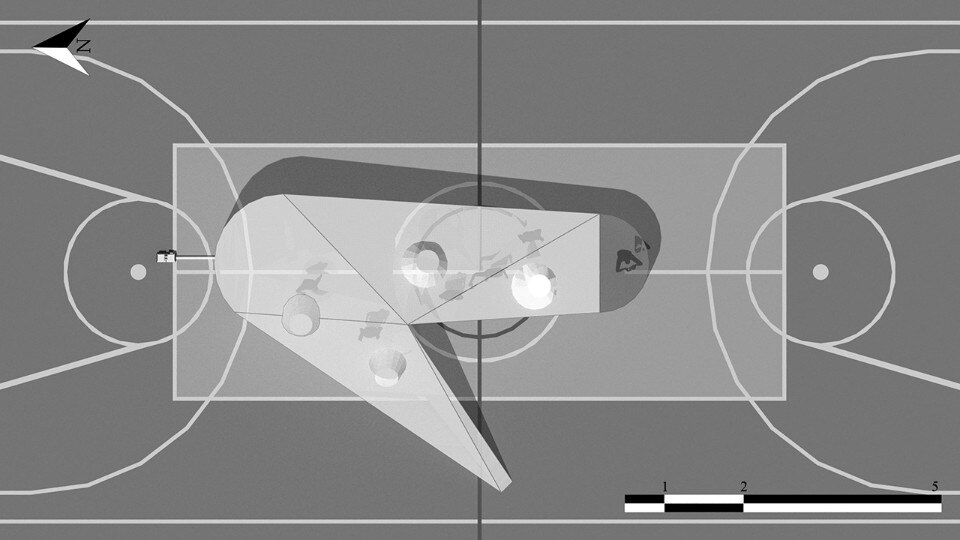Inflatable architecture is a non-mainstream area of research, but one that has its own legacy and history, which began in the 1960s. The complex structures made of PVC and air allow a formal freedom that reflects archaic and zoomorphic forms, permitting the instantaneous and ephemeral invasion of public space. Inflatables are the evolution of the hut, the tent, the nomadic settlement. Using them lets us inhabit a place, a city or a landscape in an alternative way.
Between reality and science fiction is the project of a group of young architects from the Universidad Corhuila, in Neiva, Colombia. They created an artificial topography on their student campus as a practical application of the requirements of one of the university classes. Given the limitations imposed by the Coronavirus, instead of studying a specific topography, the students decided to design a new, artificial one. The installation is low-cost and low-energy. After studying the 3D model, the students themselves cut and pasted the PVC triangles and semicircles that form the inflatable membrane. This visually striking project will be used by the students for educational and recreational activities.


